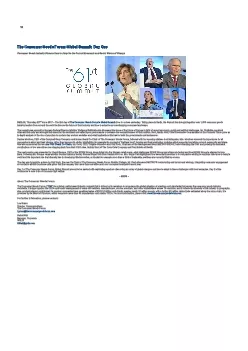PPT-Food Science CDE Training:
Author : ellena-manuel | Published Date : 2017-06-24
Product Development Winter 2017 Presented by Food Science Supervisors Sara Roberts Food Science amp Technology Department and Julie Reiling the Food Processing
Presentation Embed Code
Download Presentation
Download Presentation The PPT/PDF document "Food Science CDE Training:" is the property of its rightful owner. Permission is granted to download and print the materials on this website for personal, non-commercial use only, and to display it on your personal computer provided you do not modify the materials and that you retain all copyright notices contained in the materials. By downloading content from our website, you accept the terms of this agreement.
Food Science CDE Training:: Transcript
Download Rules Of Document
"Food Science CDE Training:"The content belongs to its owner. You may download and print it for personal use, without modification, and keep all copyright notices. By downloading, you agree to these terms.
Related Documents














